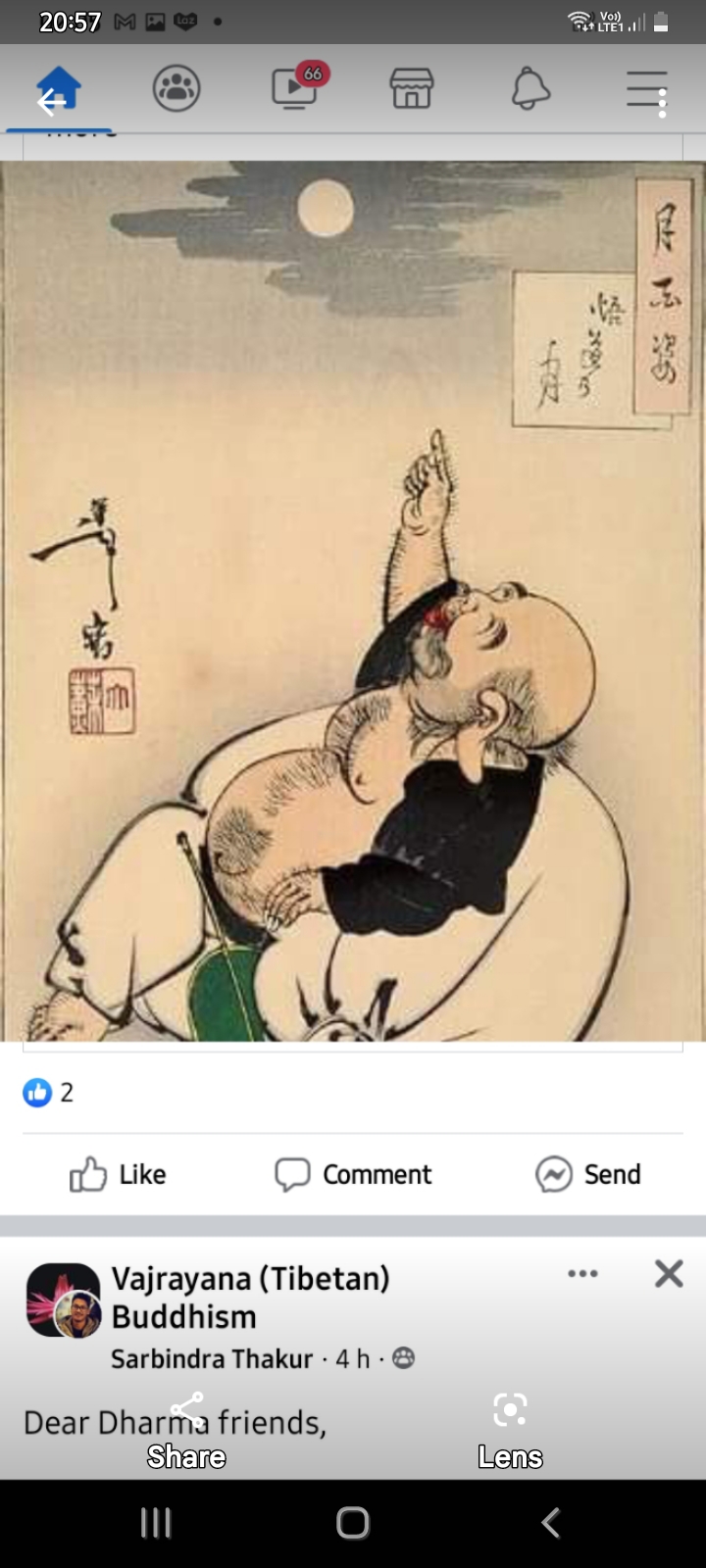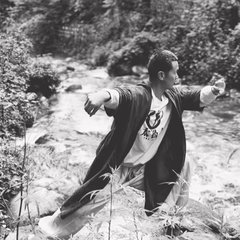-
Content count
10,542 -
Joined
-
Last visited
-
Days Won
100
Posts posted by C T
-
-
1 hour ago, Maddie said:Another common misconception I've noticed is that people think the Buddha taught that there is no self. Actually if you read the suttas he never said this, he just simply taught things that were not the self that were mistaken to be the self. He also didn't say there was a self but he didn't say there wasn't either.
This excerpt from Thanissaro Bhikkhu is probably closer to what's being alluded to with regards to Gautama's teaching on Anatta (non-self) --
QuoteThe path begins with discernment — the factors of right view and right resolve — and discernment begins with this basic question about which actions are really skillful: "What, when I do it, will lead to long-term welfare and happiness?"
The Buddha's teaching on not-self — and his teaching on self — are, in part, answers to this question. To fit into this question, perceptions of self and perceptions of not-self are best viewed as kamma or actions: actions of identification and dis-identification. In the terms of the texts, the perception of self is called an action of "I-making" and "my-making (ahaṅkāra mamaṅkāra)." The perception of not-self is part of an activity called the "not-self contemplation (anattānupassana)".
Thus the question becomes: When is the perception of self a skillful action that leads to long-term welfare and happiness, when is the perception of not-self a skillful action that leads to long-term welfare and happiness?
This is the reverse of the way that the relationship between questions of kamma and not-self are usually understood.
If you've ever taken an introductory course on Buddhism, you've probably heard this question: "If there is no self, who does the kamma, who receives the results of kamma?" This understanding turns the teaching on not-self into a teaching on no self, and then takes no self as the framework and the teaching on kamma as something that doesn't fit in the framework. But in the way the Buddha taught these topics, the teaching on kamma is the framework and the teaching of not-self fits into that framework as a type of action. In other words, assuming that there really are skillful and unskillful actions, what kind of action is the perception of self? What kind of action is the perception of not-self?
So, to repeat, the issue is not, "What is my true self?" but "What kind of perception of self is skillful and when is it skillful, what kind of perception of not-self is skillful and when is it skillful?"
-
 2
2
-
-
Crush the eggshell of the mind and unfold your wings in the open sky. Destroy the hut of duality and inhabit the expansive mansion of pure awareness. There are no other enemies or obstacles to overcome and vanquish. Ignorance - dualistic thinking - is the great demon obstructing your path. Slay it right now and be free!
~ Nyoshul Khen Rinpoche
-
 2
2
-
-
QuoteWe should contemplate the idea that all phenomena have the indivisible nature of appearance and emptiness. Although they appear before us, they are completely devoid of self-existence. And although they are empty of inherent existence, they still appear. Once we have gained certainty that all appearing phenomena are empty, we should then rest in the vast, skylike nature of mind, which is the union of appearance and emptiness.
~ Anyen Rinpoche
🙏😊 thanks, Dzogchenyogi
-
 3
3
-
-
QuoteFirst of all, it is absolutely necessary to establish the correct view. To establish the view means to acquire complete certainty about the absolute truth, which is that the phenomenal world, though obviously appearing and functioning, is utterly devoid of any ultimate reality. This view of all phenomena as appearing yet void is the seed from which the perfect fruit of enlightenment will grow. The first step in establishing the view is to acquire a proper understanding of the teachings about it.
Then, to incorporate the view into our inner experience, we put it into practice over and over again; this is the meditation.
Maintaining our experience of the view at all times and under all circumstances is the action.
Through the constant combination of these three - view, meditation, and action - the fruit of the practice of Dharma will fully ripen. As the saying goes, "When milk is carefully churned, butter is produced."
- Dilgo Khyentse Rinpoche
The Heart Treasure of the Enlightened Ones
Sincere thanks to Dzogchenyogi 😊🙏
-
 3
3
-
-
-
21 hours ago, Taomeow said:Fragrance of Zhejiang.
Proper tea ceremony.
Far away, so close.
far away, so close
this earthy, sweet aroma
free smells, everyone
-
 1
1
-
-
On 27/02/2023 at 6:20 AM, LivingLight said:
Many seem to think they're advanced. Seem to think they're mighty practitioners. Many seem to have ''awoken'' as ''black magicians''. But who can consciously astral project by their will?
Could you please clarify a bit on the connection between those with big claims, how they then awaken as black magicians, and finally, the question regarding astral projection? Also curious how these are tied in to the Root Verses of the Six Bardos?
-
 1
1
-
-
10 minutes ago, steve said:genmaicha for one
but my recommendation?
oolong from Taiwan
oolong from Taiwan
my friend swears by Longjing tea
fragrance of Zhejiang
-
 3
3
-
-
39 minutes ago, Mark Foote said:
I drink tea in bothmy home and my friend's tea house
the tea house tea shines
the tea house tea shines
soothing are teas from Japan
genmaicha for one
-
 3
3
-
-
11 hours ago, Maddie said:....Not to say that they're not useful but clearly not from the Buddha.
Depends. If you were to ask a Vajrayana practitioner, you'd be informed the Buddha turned the Dharma wheel on 3 occasions, giving teachings to the 3 types of 'hearers' - the solitary ones that prioritise self emancipation by practicing the Middle Way, then the bodhisattvas who vow to calm sufferings of beings by the embodiment of Bodhicitta, and finally, aspirants that follow the path of Mahamudra and/or Dzogchen. This group will propose that there isn't a single teaching in all 3 turnings that did not come from Gautama.
-
 1
1
-
-
BODHIDHARMA
"Through endless ages, the mind has never changed. It has not lived or died, come or gone, gained or lost. It isn’t pure or tainted, good or bad, past or future, true or false, male or female.
It isn’t reserved for monks or lay people, elders to youths, masters or idiots, the enlightened or unenlightened. It isn’t bound by cause and effect and doesn’t struggle for liberation.
Like space, it has no form.You can’t own it and you can’t lose it. Mountains, rivers or walls can’t impede it. But this mind is ineffable and difficult to experience. It is not the mind of the senses. So many are looking for this mind, yet it already animates their bodies. It is theirs, yet they don’t realize it."-
 5
5
-
-
Unanswerable questions provoke endless philosophical and theological debate, whereas unquestioning awareness is a pure and simple presence beyond disputation.
~ Paramito
-
 4
4
-
-
5 hours ago, Tom Beckett said:What exactly do you mean by this?
The comment was in response to your OP "Buddhist meditation for extinguishing the self".
Imo, there are no meditations in Buddhism as implied in the OP. This is because, from the pov of Buddhist praxis, the self is nothing more than a prop - it's apparentness and existence is a conglomeration of nothing more than mental imprints that came about out of our habitual ways of grasping at sense impressions. With this tendency, it's unavoidable that our relationship with the world will tend to be based off the mistaken view of a constant subject/object split, which then begets and propagates all sorts of other conflicting ideas and relational views with the external world. This brings about stress because we continue to operate from a false premise.
Correcting this by realigning & reconcialating Right View resolves the dichotomy. This is the fundamental goal in Buddhist contemplative practices. To expend precious energy by chasing after the annihilation of a mirage-like self is pernicious yet commonly practiced - its a habitual thing, one which perpetuates all sorts of unnecessary strife.
* Venkatesh on Right View - https://tricycle.org/article/right-view/
-
11 hours ago, Mark Foote said:the cat's fault? No way!
broken china, curtains torn--
Bruce Lee reflexes!
Bruce Lee reflexes!
a natural endowment
smooth operator
-
 2
2
-
-
Maybe the real bogeyman is not the side effects, but the habitual tendency to be overly analytical and critical of our thoughts, physicality, and emotions. This habit often reinforces the clinging and aversion dynamic, which in turn reinforces cyclical periods of highs and lows, leading to feelings like being trapped in a generally perpetual state of melancholia.
Sometimes it really helps to simply let it all go, and just rest the mind within a pervasive sense of spacious openness. This isnt the same as spacing out. As Nyoshul Khen Rinpoche once said, "Rest in natural great peace, this exhausted mind, beaten helpless by karma and neurotic thought, like the relentless fury of pounding waves in the infinite ocean of samsara."
-
 1
1
-
 1
1
-
-
"IN most of our relationships, we spend much of our time reassuring one another our costumes of identity are on straight." ~ Ram Dass
-
 4
4
-
-
Imo, with sufficient rightly directed contemplation, one arrives at the realization that what's truly vital is overcoming dualistic tendencies, and not, in any manner, to attempt practices that open doors which lead to self-annihilation. This, I'm quite certain, is not an objective in authentic Buddhist praxis.
-
 2
2
-
-
1 hour ago, Taoist Texts said:there is a moon?
Compounding error.
Such is life.
-
 1
1
-
-
24 minutes ago, Taoist Texts said:I would.
Then the tendency to mistake the finger for the moon becomes real. Common error.
-
1 hour ago, Mark Foote said:she was what still is
out the corner of my eye
something stands alone
something stands alone.
That chap. Could not count past six
don't write when sleepy
-
 1
1
-
-
5 minutes ago, Apech said:a private heaven.
The field of meadow flowers
wide enough for all.
wide enough for all
St. Patrick Street, Dublin
pint of Guinness, please
-
 4
4
-
-
6 hours ago, iinatti said:DaoBums rest…
… in peace
with absurd dreams to prove the
opposite is true
opposite is true
truth is but a fleeting 'ping'
reserve all judgements
-
 3
3
-
-
33 minutes ago, Mark Foote said:gotten me into
writing nonsense--April Fool's day,
mid-February
mid-February
any month is a good month
for pork pies and ale
-
 2
2
-
-
9 hours ago, Maddie said:Oh where do I sign up? 😏
You mustn't. That's a fake list because Swami N isn't on it
-
 1
1
-




The effects of full moon on your practice and energy levels
in General Discussion
Posted